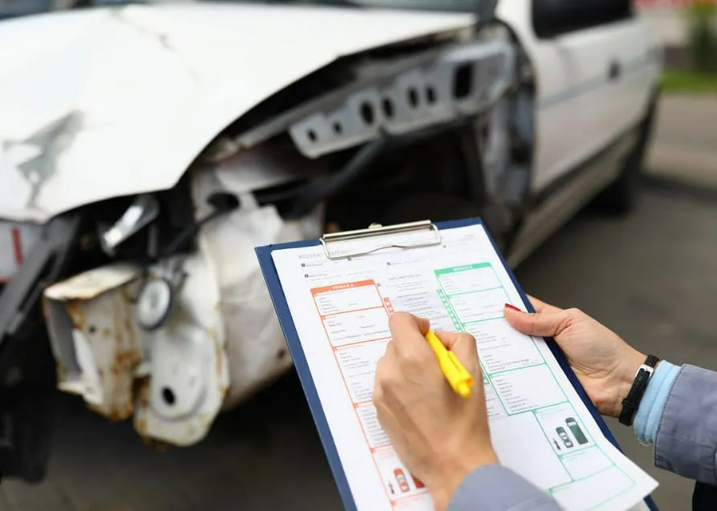A Guide to Decoding Car Safety Ratings


When shopping for a car, you’ll likely consider factors like speed, handling, storage space, and comfort. However, one of the most critical aspects to evaluate is the car’s safety rating. While modern vehicles come equipped with standard safety features, variations in design and manufacturing mean that some cars are rated safer than others. Car safety ratings provide a standardized metric for consumers to compare vehicles. Let’s delve into what these ratings mean and how they are determined.
Two types of car safety ratings
The concept of standardized car safety ratings emerged in the late 1970s to provide consumers with clearer insights into how various vehicles would perform in accidents or adverse situations. These ratings usually involve a series of collision tests, resulting in an overall grade based on the performance outcomes.
While some manufacturers perform their own safety and collision assessments, two primary organizations issue vehicle safety ratings in the United States. Each organization has its unique methodology and rating system.
National Highway Traffic Safety Administration
The National Highway Traffic Safety Administration (NHTSA) is a government agency under the Department of Transportation. NHTSA began safety testing with frontal collisions in the late 1970s and has since expanded to include additional evaluations. Vehicle safety ratings are assigned on a five-star scale, with five stars representing the highest rating. NHTSA conducts annual safety tests on many of the top-selling cars, although not every vehicle is tested, and the models assessed can change from year to year.
Insurance Institute for Highway Safety
The Insurance Institute for Highway Safety (IIHS) is an independent, non-profit organization backed by many major players in the U.S. insurance industry. Committed to reducing fatalities, injuries, and property damage from car accidents, IIHS conducts extensive research on vehicle safety.
Since the early 1990s, IIHS has performed a variety of collision tests that differ from those conducted by the NHTSA. Based on the results, vehicles receive safety ratings of Good, Acceptable, Marginal, or Poor. Similar to NHTSA, IIHS tests only a selection of vehicles each year, typically focusing on best-selling models or those that have undergone significant redesigns.
NHTSA ratings explained
NHTSA safety testing takes place at various independent facilities across the United States. After evaluating a series of tests, they assign an overall grade on a five-star scale, with five stars representing the highest rating. Here’s what they assess:
Frontal crash test
To simulate a head-on collision, a car is driven into a fixed barrier at 35 mph. Two crash-test dummies, representing different adult body sizes, are positioned in the front seats with their seatbelts fastened. The data gathered from the dummies helps researchers assess potential injuries to the head, chest, abdomen, and pelvis that human passengers could experience in similar scenarios.
Side pole crash test
To simulate a side-impact crash, a car is driven at 20 mph into a utility pole with a 9.5-inch diameter on the driver’s side. A small-sized adult crash-test dummy is used to assess potential injuries to the head, chest, lower spine, abdomen, and pelvis that a driver might sustain in this scenario.
Side barrier crash test
In this test, a 3,015-pound barrier strikes the driver’s side of a parked vehicle at 38.5 mph to simulate a side-impact collision with another car. Two crash-test dummies of varying adult sizes are positioned in the driver’s seat and the rear driver-side passenger seat (the seats facing the impact). Data gathered from these dummies is analyzed to assess potential injuries to the head, chest, abdomen, and pelvis that occupants could experience in a similar situation.
Rollover resistance test
The rollover test is conducted in a lab rather than as an actual crash test. It utilizes a formula called the Static Stability Factor to assess the vehicle’s potential for rolling over, which is determined by its center of gravity.
IIHS ratings explained

IIHS safety testing takes place at their research facility in Virginia. Vehicles undergo six different tests and are rated as Good, Acceptable, Marginal, or Poor. Those that achieve a Good rating across all six tests are recognized as an IIHS Top Safety Pick+. Here’s a look at the tests conducted by the IIHS:
Driver-side small-overlap front
This test simulates a head-on collision with a focus on the driver’s side. A vehicle is crashed into a barrier at 40 mph, with two test dummies positioned in the front seats.
Passenger-side small-overlap front
This test replicates a similar collision, but with the impact primarily affecting the passenger’s side.
Moderate-overlap front
This test also simulates a frontal collision, but at a different angle. A car is crashed into a barrier at 40 mph, exposing a larger portion of the front side to impact while still favoring the driver’s side. Only one dummy is used, positioned in the driver’s seat.
Side impact
This test simulates a side-impact collision, where a 4,200-pound barrier, resembling an SUV, crashes into the driver’s side at 37 mph while the car remains stationary. Dummies are positioned in the front and rear seats that face the impact.
Roof strength
In this test, a metal plate is pneumatically pressed down onto the car’s roof, compressing it by exactly five inches. The amount of force needed to achieve this measurement indicates the car’s potential performance in a rollover scenario. To earn a Good rating, the vehicle must withstand a force that is at least four times its own weight.
Head restraints and seats
This test simulates a rear-end collision in which a stationary vehicle is struck from behind at 20 mph. It employs a specialized dummy designed to closely replicate the movement of the human spine and neck.
Final Thoughts
When considering a car for purchase, it’s important to pay attention to safety ratings from both the NHTSA and the IIHS. While IIHS testing is somewhat more thorough, both organizations evaluate different factors that contribute to a vehicle’s safety. Look for cars that receive high safety ratings from both, as this can significantly improve your chances of avoiding serious injury in an accident. Although no rating can guarantee complete safety, having a top safety rating can make a meaningful difference for you and your loved ones.
